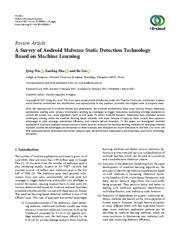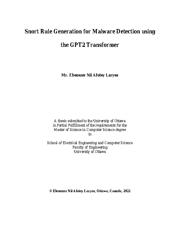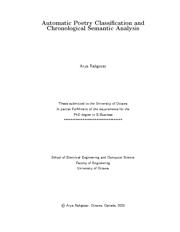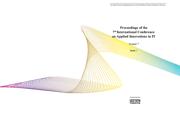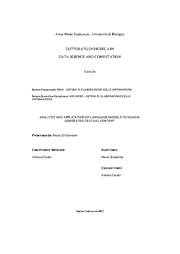A copy of this work was available on the public web and has been preserved in the Wayback Machine. The capture dates from 2021; you can also visit the original URL.
The file type is application/pdf.
Filters
Familial Clustering For Weakly-labeled Android Malware Using Hybrid Representation Learning
2019
IEEE Transactions on Information Forensics and Security
Labeling malware or malware clustering is important for identifying new security threats, triaging and building reference datasets. ...
information from multiple sources (including the results of static code analysis, the metainformation of an app, and the raw-labels of the AV vendors) to jointly learn a hybrid representation for accurate ...
This research is supported by Australian Research Grant DE170101081, DP180102828, LP150100671, DP180100106 and the National Natural Science Foundation of China under Grant 61772055. ...
doi:10.1109/tifs.2019.2947861
fatcat:yps5spdsyresnepfjqi4kz236m
A Survey of Android Malware Static Detection Technology Based on Machine Learning
2021
Mobile Information Systems
With the rapid growth of Android devices and applications, the Android environment faces more security threats. ...
In this paper, we investigated Android applications' structure, analysed various sources of static features, reviewed the machine learning methods for detecting Android malware, studied the advantages ...
Acknowledgments is work was supported by the National Natural Science Foundation of China under Grant no. 61572513. ...
doi:10.1155/2021/8896013
doaj:9dc548d197fd404fbcd4ee962f374bde
fatcat:mbuavifbmzfmjm3shzm4wcbm4a
Snort Rule Generation for Malware Detection Using the GPT2 Transformer
2022
The performance is then measured, in terms of the detection of existing types of malware and the number of "false positive" triggering events. ...
Using Natural Language processing techniques and other machine learning methods, new rules are generated based on a training set of existing Snort rule signatures for a specific type of malware family. ...
To my mom, dad, sister and my in-laws who took care of my family while I was in school, I pray God replenishes all that you have lost. ...
doi:10.20381/ruor-27963
fatcat:352al2vncret5ozduljj7azc4q
Automatic Poetry Classification and Chronological Semantic Analysis
[article]
2020
Houman's semantic analysis of Hafez's poetry is unique in that the central concept of his classification is based on intelligent scrutiny of meanings, careful observation the evolutionary psychology of ...
Hafez through his remarkable body of work. ...
SVMs are inherently two-class classifiers, while the multiclass versions are often based on the "One-versus-All" technique, to utilize the binary behaviour and extend it to multi-class through the iterative ...
doi:10.20381/ruor-24749
fatcat:maej5brlmfhexnghkfg6wt6r7e
Proceedings of the 7th International Conference on Applied Innovations in IT
[article]
2019
The research results can be of interest for researchers and development engineers, who deal with theoretical base and the application of the knowledge in the respective areas. ...
The conference is devoted to problems of applied research in the fields of automation and communications. ...
In [8] a detailed analysis of TCP BBR algorithm behaviour is presented. ...
doi:10.25673/13488
fatcat:xhaignxxabgyjp6qu3ygmrj77q
Mapping (Dis-)Information Flow about the MH17 Plane Crash
2019
Proceedings of the Second Workshop on Natural Language Processing for Internet Freedom: Censorship, Disinformation, and Propaganda
unpublished
Fourteen participants submitted a system description paper, which include models based on a wide range of learning models (e.g., neural networks, logistic regression) and representations (e.g., manually-engineered ...
We are excited that the workshop includes a diverse set of topics: rumor and trolls detection, censorship and controversy, fake news vs. satire, uncovering propaganda and abusive language identification ...
Acknowledgments This research is part of the Propaganda Analysis Project, 5 which is framed within the Tanbih project. 6 The Tanbih project aims to limit the effect of "fake news", propaganda, and media ...
doi:10.18653/v1/d19-5006
fatcat:77l3dndrkvfmlhjt6qvnrassgi
Analysis and Application of Language Models to Human-Generated Textual Content
2022
Firstly designed as simple unigram models, they improved through the years until the recent release of BERT, a pre-trained Transformer-based model reaching state-of-the-art performances in many heterogeneous ...
S OCIAL NETWORKS are enormous sources of human-generated content. Users continuously create information, useful but hard to detect, extract, and categorize. ...
User profiling also helps to detect profile duplicates [270] and social threats [224] , pointing at suspect behaviours that can be carefully investigated and quickly suppressed. ...
doi:10.48676/unibo/amsdottorato/10057
fatcat:gbjtww6jabcoddn5spdpx4z4dq
Towards Scalable Personalization
2018
Also, a special thanks to Damien Hilloulin for the French version of the abstract of this thesis. ...
' consumption log). 12 In the graph presented in We then apply a community detection algorithm [23] to the resulting graph. ...
With the advent of Web 2.0 applications, end users' resources become exploitable transparently by the service provider even through multi-threading Javascript tasks attached to web pages [98] . ...
doi:10.5075/epfl-thesis-8299
fatcat:35pb6ius4jch3ijojwsy6f7n6q


